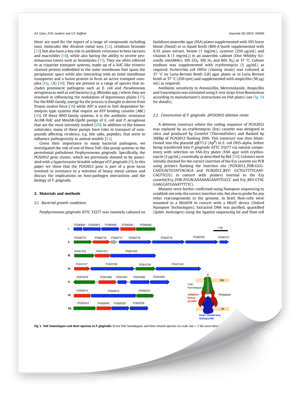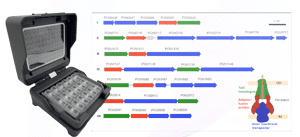Anaerobe - Volume 80

Identification of a Czc-like Operon of the Periodontal Pathobiont Porphyromonas Gingivalis Involved in Metal Ion Efflux
This study explores the function of the PGN2012 gene cluster in Porphyromonas gingivalis, a keystone pathogen in periodontitis. The research reveals that this gene cluster, specifically the PGN2012-2014 genes, encodes a CzcCBA-like tripartite efflux pump, playing a crucial role in the bacteria’s resistance to toxic metal ions, including Zn²⁺, Co²⁺, and Cd²⁺. These findings provide insights into how P. gingivalis survives the hostile conditions of the subgingival environment during periodontal disease, contributing to chronic infection and systemic health issues.
Access the complete research for:
 Critical Insights into Periodontitis: The identification of the CzcCBA-like operon in P. gingivalis highlights new mechanisms behind bacterial survival and virulence in periodontal disease.
Critical Insights into Periodontitis: The identification of the CzcCBA-like operon in P. gingivalis highlights new mechanisms behind bacterial survival and virulence in periodontal disease.
 Enhanced Experimental Precision: The Stratus microplate reader’s ability to operate in anaerobic environments allowed for accurate, high-throughput growth analysis critical to the study’s success.
Enhanced Experimental Precision: The Stratus microplate reader’s ability to operate in anaerobic environments allowed for accurate, high-throughput growth analysis critical to the study’s success.
 Broader Applications in Microbiology: The methodologies applied here can be extended to other anaerobic bacterial research, particularly in studies involving metal ion resistance and microbial pathogenesis.
Broader Applications in Microbiology: The methodologies applied here can be extended to other anaerobic bacterial research, particularly in studies involving metal ion resistance and microbial pathogenesis.

The study demonstrated that Cerillo’s microplate reader could effectively measure P. gingivalis growth in an anaerobic setting, showing that the mutant strain lacking the PGN2012 gene had a reduced growth rate and increased sensitivity to metal ions like Zn²⁺, Co²⁺, and Cd²⁺.
The Stratus’ capability to operate in anaerobic chambers was crucial for uncovering the metal ion resistance mechanisms of P. gingivalis, providing continuous and precise data that traditional methods could not achieve .

Cerillo's new Alto Microplate Reader provides enhanced precision, greater flexibility, and advanced features, making it an even more powerful tool for cutting-edge microbiological research.
Cerillo thanks A.F. Gains and G.P. Stafford for their highly impactful work and publication.
